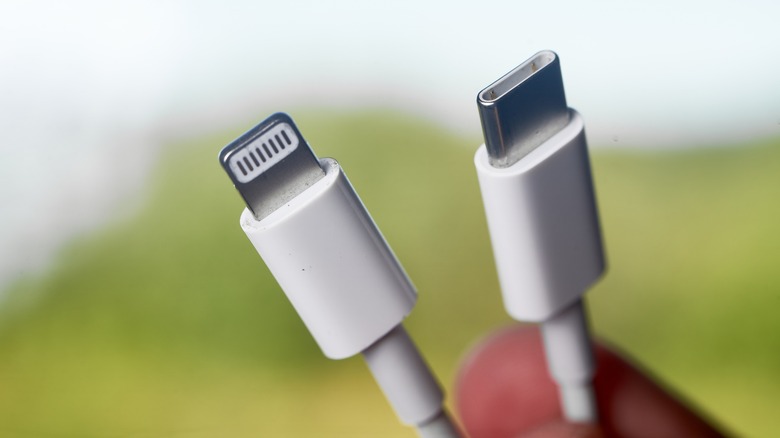How To Use Reverse Charging On iPhone 15 (And Why You Might Want To)
When Apple unveiled the iPhone 15 at the Wonderlust event on September 12, 2023, it came as no surprise that it featured a USB-C port instead of the traditional lightning port that distinguished iPhones for years. Before its launch, the European Union had, in 2021, requested Apple to incorporate USB-C in its iPhone models. However, Apple declined, arguing that such a move would stifle innovation. Fast forward to 2022, an agreement was reached between the European Parliament and E.U. member states, mandating that all smartphones and electronic devices sold within the E.U. must be equipped with a USB-C port by the end of 2024, and Apple had to adhere.
The introduction of the USB-C port on the iPhone 15 saw mixed reactions. Some were pleased to finally have this technology on iPhones, as it offered faster data transfers and charging speeds. However, others expressed frustration at the loss of the iconic lightning port, with questions arising about the fate of the lightning cables in their possessions. Nonetheless, one advantage of Apple's adoption of USB-C is the iPhone's newfound capability to support reverse charging. This goes beyond charging other iPhones and Android devices. It also accommodates accessories such as AirPods, Apple Watch, and other compatible small devices that support USB Power Delivery, delivering power up to 4.5 watts.
Using Reverse Charging on iPhone 15
Reverse charging isn't a new feature on Android devices, and the process for reverse charging for the iPhone 15 is essentially the same as on an Android smartphone. Reverse charging can either be wired or wireless. For now, the iPhone 15 only supports wired reverse charging using USB-C. But you know Apple – they'll probably hype Wireless reverse charging like it's groundbreaking when they do release it in a few years. To use this feature on the iPhone 15, when unboxing your iPhone 15, you will find a dual USB-C Woven cable. Grab that cable. Stick one end of the cable into your iPhone and the other end into another gadget with a USB-C port. It could be another iPhone 15, your AirPods, Apple Watch, or even an Android device. That's it.
Additionally, you can also do reverse charging on your iPhone 15 using a regular USB-C to lightning cable for older iPhone models. When you plug your iPhone 15 into a device with a Lightning port, it will automatically charge that device while drawing power from your iPhone 15. However, if you connect your iPhone 15 to another iPhone 15 using a USB-C to USB-C cable, the iPhone with the higher battery percentage will charge the one with the lower battery level.
Why is this important for you?
The reverse charging feature is very useful for everyday life. Imagine you find yourself in a low battery situation and urgently need to make a call or send a text during an emergency. Unfortunately, there may not be an available power outlet to charge your device. In such cases, you can just whip out your cable and plug it into another phone to get some juice for that call or text. Plus, this feature allows you to assist friends or family members by supplying power to their devices when needed.
And don't forget about your accessories. It's common to forget to charge items like AirPods or an Apple Watch before a workout, and you might realize this oversight while on your way to the gym. In such situations, your iPhone 15 can serve as a makeshift power bank, ensuring your accessories are ready to go before reaching your destination.


